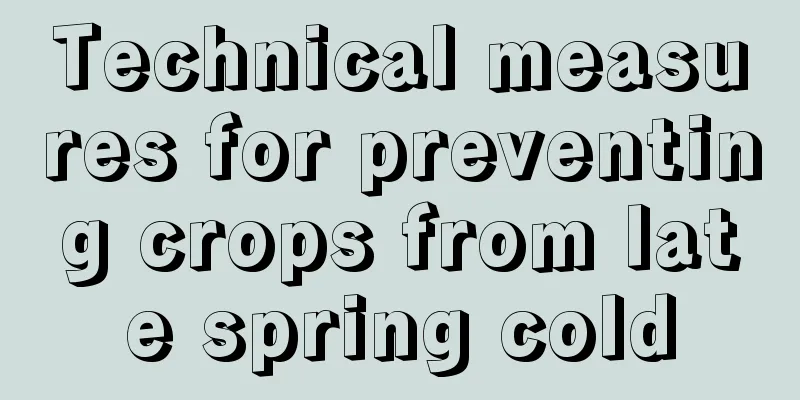Technical measures for preventing crops from late spring cold

|
Late spring cold is a spring weather phenomenon, which refers to the situation where the temperature rises rapidly in the early spring, but the temperature in the later period is lower than that in normal years. Late spring cold has an adverse impact on agricultural production, may cause frost damage to crops and affect crop growth. Let’s learn about the technical measures to prevent late spring cold in crops. 1. Strengthen meteorological monitoring and early warning Pay close attention to the weather forecast, understand the possibility and intensity of late spring cold snaps in advance, and make corresponding preparations. 2. Low temperature hardening For seedlings, low-temperature training can be carried out by gradually increasing the ventilation volume to improve the seedlings' cold resistance. 3. Add protective facilities For open-field crops, the cold air can be blocked and the drop in surface temperature can be reduced by setting up wind barriers and covering the ground with mulch. 4. Temporary heating Before the cold wave arrives, for crops in greenhouses or sheds , the temperature in the shed can be raised by building a simple coal stove, installing electric lights or other heating equipment. 5. Watering Watering the soil before the temperature drops can improve soil moisture conditions, regulate the microclimate of the soil and near-ground layers, reduce the fluctuation of ground temperature, and buffer the impact of cooling. 6. Scientific fertilization Apply fertilizers rationally to enhance the stress resistance of crops. For example, spraying protective agents such as potassium dihydrogen phosphate, brassinolide, seaweed , amino acids, etc. before the temperature drops can improve the crops' resistance to frost. 7. Post-disaster recovery After the late spring cold snap, it is necessary to promptly investigate the freezing conditions of crops and take appropriate remedial measures, such as applying fertilizers, spraying fertilizers on leaves, etc., to promote the recovery of crop growth. 8. Pest and disease control After the late spring cold snap, crops may be more vulnerable to diseases and pests, so it is necessary to strengthen the monitoring and prevention of diseases and pests. 9. Agricultural insurance Establish and improve the agricultural insurance system to provide economic security for farmers and reduce economic losses caused by late spring cold snaps. In short, these measures need to be appropriately adjusted according to the specific crop types, growth stages and local climatic conditions. By comprehensively applying these technical measures, the impact of late spring cold on crops can be effectively reduced.
|
<<: How to repot the Kalanchoe? What to do if it wilts after repotting?
>>: The correct way to water Kalanchoe, what to do if you water too much
Recommend
When is the best time to plant magnolia trees?
Magnolia is a traditional folk flower , also know...
How to grow a money tree?
The money tree is a popular indoor foliage plant....
What to do if the leaves of Desert Rose turn yellow
1. Change the breeding environment: Reason: Deser...
Can purple leaf spider plant be hydroponically cultivated? Methods and key points of water cultivation
Can purple leaf spider plant be hydroponically cu...
How do cornflowers survive the winter?
Cornflower Growing Conditions Cornflowers are rel...
How to make a pagoda-shaped bonsai of lucky bamboo
Choose Lucky Bamboo Lucky bamboo grows healthily,...
How to grow colorful pineapple
1. Maintenance methods 1. Temperature: The most s...
Can animal meat be used as fertilizer?
Animal meat as fertilizer Animal meat can be used...
7 taboos of eating durian
1. People with kidney disease should not eat Duri...
How to prune four-season plum
1. Pruning method Pruning is an important step fo...
How to care for Kalanchoe after it blooms
Pruning after flowering Pruning is a necessary me...
How to deal with the rain orchid after it withers
How to deal with the rain orchid after it withers...
How to grow roses so that they bloom everywhere?
Roses are popular among gardening enthusiasts for...
What flowers to grow to attract wealth and gather fortune
1. Fortune Tree The money tree is an evergreen tr...
Do strawberries need watering every day?
Do you water strawberries every day? Strawberries...









